The OKR goal-setting methodology is a tried and true way to help you and your team create, track and achieve measurable goals in line with your organization’s broader vision. Originally pioneered by John Doerr, the framework groups the objectives you’d like to see with the key results used to measure its progress. Here, you can learn more about OKR goals and how they benefit you, along with each OKR component and tips on how to write solid OKRs. We’ll even throw in some examples and templates to get you off to a great start.
Great for OKR goals and daily standups or check-ins.
14-day free trial. No credit card required.
What are OKR Goals?
OKRs, or Objectives and Key Results, is a leadership tool or framework that measures team members’ challenges and goals within a workplace. They communicate what you want to achieve and the milestones you’ll meet to do so. OKRs can help you and your team track progress, stay aligned and encourage engagement and collaboration. You would typically set OKR goals on a monthly or quarterly basis. They’re used more often than annual reviews since workplace environments change fast and move at a quick pace. OKRs are adaptable to organizational changes, and they’re transparent to help with goal alignment of all departments and teams. Rather than coming as direction from upper management, OKRs are created laterally and built on by each group and individual team member’s goals. This makes OKRs highly collaborative as everyone plays a role in them.
Components of OKR Goals
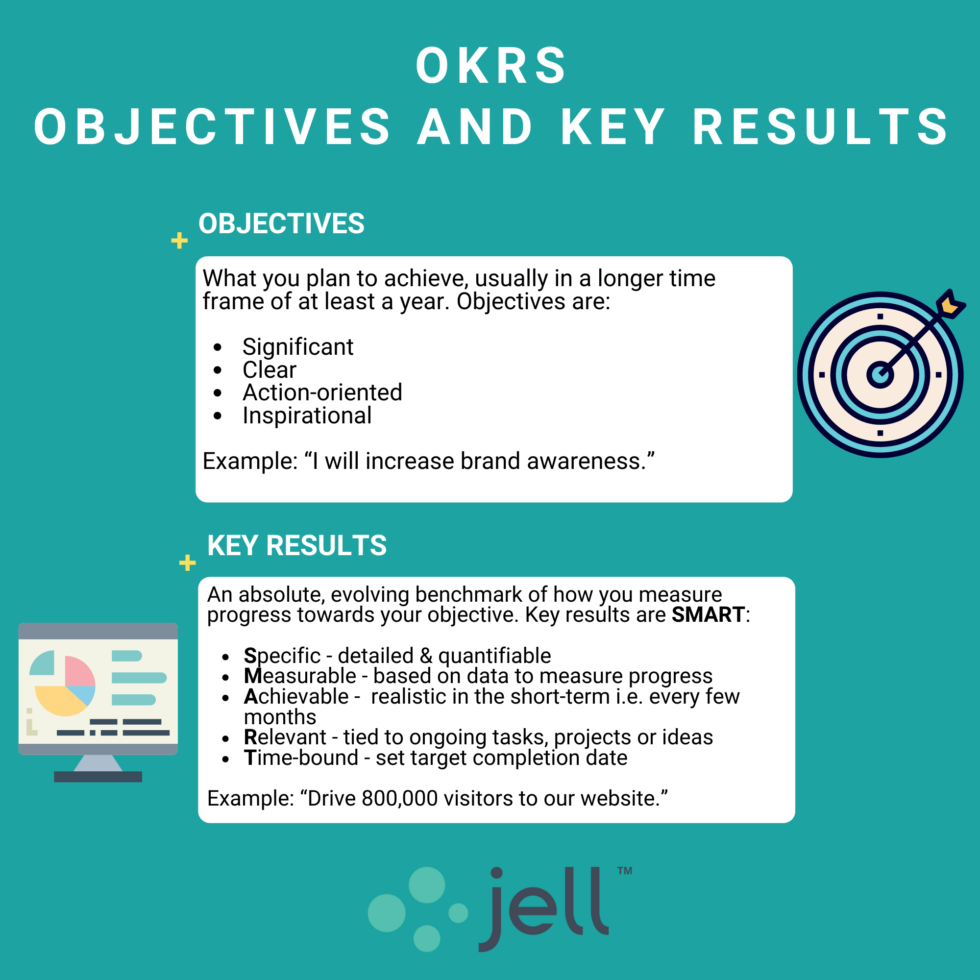
Your OKRs should consist of one objective and 3-5 key results for each. Key results can either be written below the objective or all together as one statement, in this format: “I will (objective) as measured by (key results).”
Objectives
An objective is what you plan to achieve and is usually a longer time frame, think at least a year. It should be significant, clear, action-oriented, and, hopefully, inspirational. For example, “I will increase brand awareness.”
Key Results
Key results are the metric you use to measure progress towards your objective. They act as a benchmark and monitor how you achieve your objective. They’re SMART, meaning specific, measurable, achievable, relevant and time-bound. More specifically:
- Specific: Make your objectives very detailed and quantifiable.
- Measurable: Your OKRs should be based on data so you can easily measure progress.
- Achievable: You should have realistically achievable objectives in a shorter term, like every few months.
- Relevant: Your OKRs won’t be successful unless they’re relevant and visible to all team members. That means tying them to ongoing discussions, tasks, or projects.
- Time-bound: Be sure to set a target completion date for your OKR goal, or it could easily fall by the wayside.
Key results evolve as your work and they’re also absolute – you either meet its requirements or you don’t. For example, “Drive 800,000 visitors to our website.” At your OKR goal check-ins, you’ll want to go through your key results to see whether they were fulfilled. When you find all of your key results are done, you’ve achieved your objective.
Why Should I Use OKRs?

Despite the time and effort that many organizations spend on goal-setting, the fact is that only about a quarter of employees clearly understand how their roles and responsibilities contribute to the larger company goals. The reason for this is that most teams set their goals at the start of a quarter or year and never look back. Motivation skyrockets, though, once team members are clear on the relationship between their own work and their employer’s objectives. This gives them context for how and why their efforts matter, and that’s meaningful to many people. There are a number of tangible benefits to using OKRs that could make them worthwhile for you and your team. Good news, we’ve even made it easy for you with our free OKR template.
Focus
OKR goals make you dig deep to prioritize and focus on what’s most important since you’re limited in the number that you’re setting. You can have up to six OKRs but as the saying goes, less is more. Each objective should fit on one line and you should have 3-5 key results for each one. To help you decide what to focus on, ask yourself, “What’s most important for the next 3/6/12 months?” Once you have your focus, it will guide you in making a real, immediate difference among your team with increased productivity and accountability to go along with it.
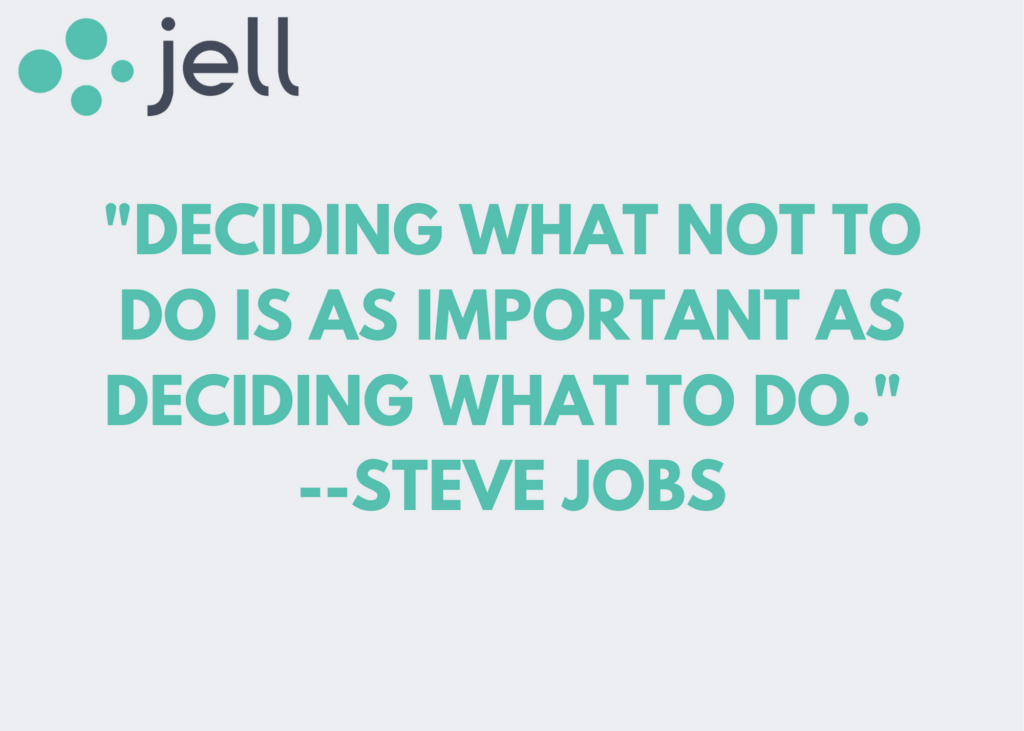
Alignment
When objectives are set, you’ll see change in action in the day-to-day work of your team and manager. Tasks and activities become aligned to the organization’s vision and broader goals. The Harvard Business Review points out that companies with highly-aligned employees are over twice as likely to perform at the top.
Commitment
When you and your colleagues agree on and commit to achieving OKRs, the required resources and time become available to be sure this happens, and tracking of this becomes transparent to all. Whether done through a Google doc, an OKR tracking tool like Jell, printing and posting sheets of paper, or sharing progress through presentation slides each month, that aligned commitment is transparently shown to all.
Tracking
Any and every OKR goal should be trackable through the metrics established when you created them. Regular check-ins, ideally on a weekly basis, are ideal to ensure you stay on top of your goals. At each check-in, ask yourself if you’re on track to meet the goal and why or why not. If you’re not, figure out what you might need to achieve it.
Stretching
Even if you don’t actually meet the specific OKR goal you set, it’s important for your professional and personal growth to stretch yourself. Set objectives and try. At the end of the day, the OKR process inherently pushes organizations and their team members to strive further, and reach greater heights – even a little more than they ever thought possible
Other OKR Benefits

As a manager, using OKR goals allow you to:
- Give clear direction to teams and individual team members.
- Make decisions in a more effective and informed way.
- Gain vision and insight through check-ins.
- Improve team member engagement and empowerment.
- Offer upper management better insight and transparency.
- Assess the root causes of why objectives are not being achieved.
- Improve resource management and allocation.
- Understand cross-functional dependencies across teams and become more efficient.
Related Articles
Free OKR Template – How to Set Objectives and Key Results
Concrete Tips for Getting Started with OKRs
How to Use Stretch Goals with OKRs
Great for OKR goals, daily standups and check-ins.
14-day free trial. No credit card required.
How to Write the Best OKRs

Thankfully, the OKR framework is flexible, so there isn’t a single best way to write OKR goals. Certain things will look different and work better for different teams and organizations, so you might go through some trial and error, which is completely normal. That said, some good rules of thumb to write solid OKRs include making them quantifiable and connected to your teams’ day-to-day work. To get you started, here are some OKR goal-setting best practices that work across the board.
Start Small
When you first introduce the OKR framework to your team, there’s a good chance they’ll feel awkward about it. So, start small and take baby steps with even just one objective and key result from everyone. Then, build from there together so everyone has a chance to ask questions and learn from each other.
Keep it SMART
Remember that SMART acronym for OKRs? It’s super critical to your team’s success. The truth is, many times companies find out too late that their people struggled when they didn’t know whether goals were actually achieved. Motivation and communication can be greatly improved when your team’s goals are SMART.
Work with Themes
When many people start working with OKRs, they’re often curious about many things, like what makes a good objective or key result, how far they should stretch themselves, and how their OKRs compare to their coworker’s. It can help everyone involved to zero in on some broader themes, like improving morale, driving traffic, boosting revenue, improving functionality, etc. From there, key results should naturally come up.
Review Often
Make a point of reviewing OKRs and making them accessible to your team on at least a weekly basis. There’s no point in going to the effort of creating them if they’re not visible and linked to your workflow each day. It happens all too often that managers work on large, collaborative goal-setting projects just to be looked at once and cast aside until the next year. And by then, you can’t even recall why you made the goals, to begin with.
Think About OKR Assessment
When writing your OKRs, it helps to keep in mind how and when they’re assessed. There are a few ways to do this. Andy Grove, the creator of the OKR methodology, uses a straightforward “yes” or “no” to simply ask if it was met or not. But, many organizations prefer more information and use a stoplight “red, yellow, green” system instead. Red means “we failed”, yellow means “we progressed”, and green means “we achieved our goal”. Finally, there is an even more detailed method that Google uses, which includes a percentage scale from 0-100 that identifies a score for each KR. The average score for all KRs gives you their objective’s overall score.
Examples of OKR Goals
Now that you have some background on what OKR is all about, it can be helpful to see the theory put into action with some concrete examples. We also have some solid OKR templates to help you out.
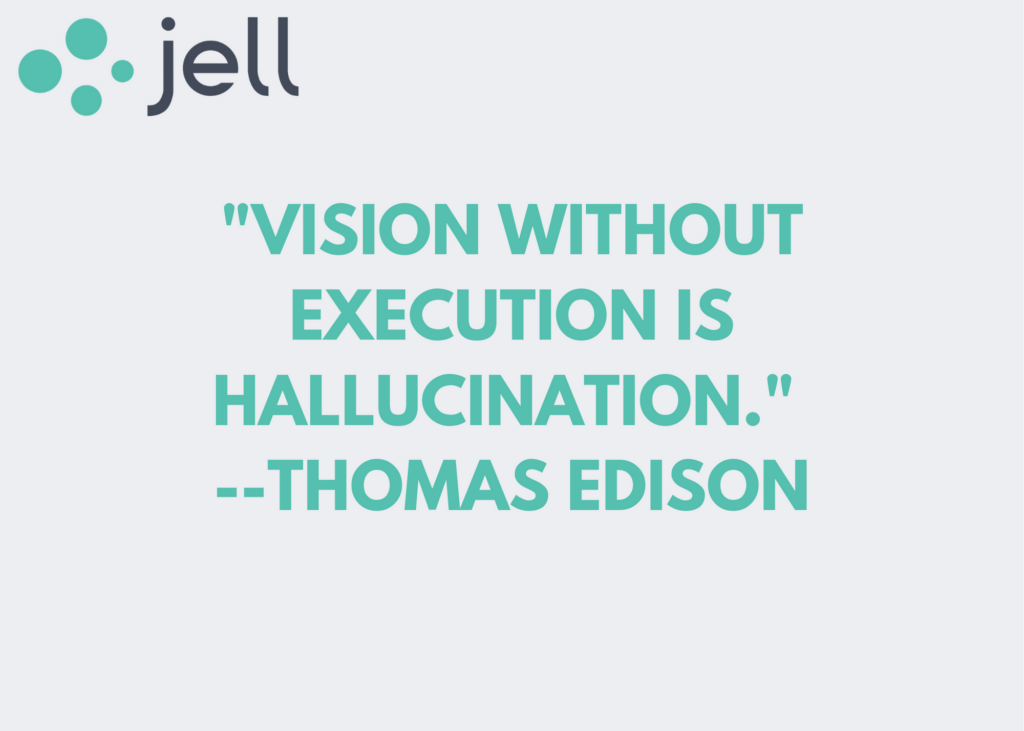
OKR format: I will (objective) as measured by (key results).
OKR Goal Example 1: Website Traffic
A growth team member at a SaaS company might set the following OKR: “I will increase daily website traffic as measured by 10,000 people visiting the website each month.” Remember, objectives usually have 3-5 key results to go along with them, so we can add more here, such as:
- I will increase daily website traffic as measured by getting 500 visits each business day.
- I will increase daily website traffic as measured by getting 2,500 visits per week.
OKR Goal Example 2: Lower Carbon Footprint
A production team member at a sustainable retailer might set the objective: “I will have the smallest carbon footprint in our industry.” They could plan to do this as measured by these KRs: “Having zero waste in our supply chain and shipping infrastructure.” “Paying a 100% carbon offset for our carbon dioxide emissions.” “Using material that is 30% compostable.”
OKR Goal Example 3: Grow Membership Base
The marketing team at an art gallery might create this objective to increase memberships of a more diverse and young crowd: “I will attract younger, more diverse gallery members.” As measured by these KRs, they could achieve the objective: “Growing our “$35 Under 35” membership base by 80%.” “Attracting 50 non-members monthly to live artist Q&As.” “Getting mentions on 3 local Instagram influencer accounts.”
Tools for Creating OKR Goals
There are many tools out there for creating your OKR goals. Here are a few of the top options.
Jell
Jell makes it easy to share and review your OKRs and align your whole team and other organizational levels so they can focus on the big picture in one spot. Team members can conveniently link daily workflow activities to long-term goals, see metrics and comments, and track progress at any point throughout the process. This drastically increases the chances of success. Check out some of the features you’ll enjoy with Jell:
OKRs and goalsetting
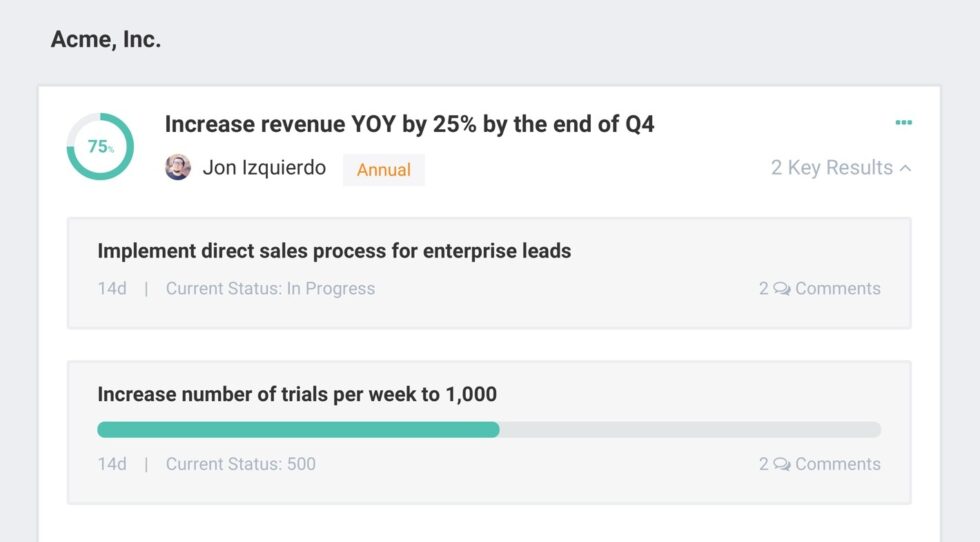
With Jell, it’s easy to set goals at any organizational level and see and track them in one spot. Everyone can share their progress in integrated day-to-day workflows so that they don’t get looked at once and forgotten about. Team members keep their goals front and center with metrics, comments and linked tasks to increase their chance of achieving them. When you regularly review, track and score progress, your whole team is set up to succeed. Here’s how you can work with OKR goals in Jell:
Daily standups
You can instantly get set up with Jell out-of-the-box for your daily standup meetings, or customize a schedule to suit your team. Jell is a fantastic tool for teams across different time zones. From there, you’ll set your questions in the format that suits you best and makes it easy for your team to answer. Once your team is set up on Jell, they’ll get timely reminders through Slack or email for their standup meetings.
Check-ins
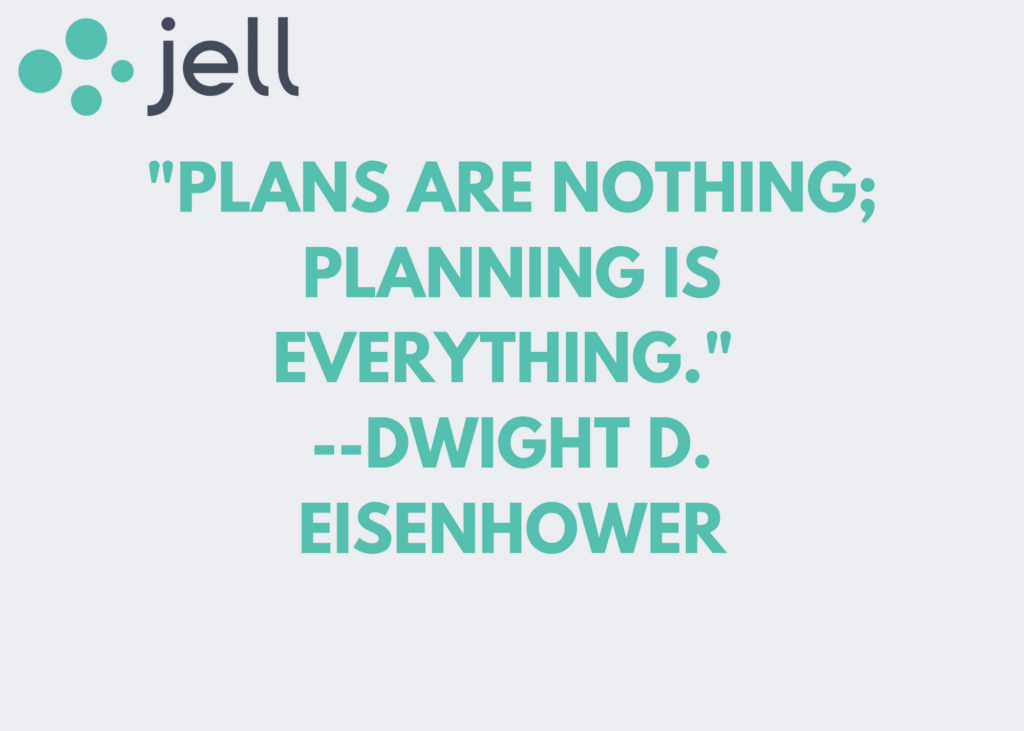 The Jell platform makes it easy to make the most out of your team’s time. When you set up a weekly or biweekly check-in and prepare in advance, you have the chance to make one-on-one meetings as productive as possible with all the information you need. That means collaborating with your team to grow as individuals and achieve goals without roadblocks. Managers often use Jell for quick weekly recaps to summarize what went on. You can ask questions like, “what was your biggest accomplishment this week?” or, “how many new clients did you meet or book meetings with this week?” As well, managers like yourself are often required to communicate with upper management about things like your team’s accomplishments, milestones and progress. Check-ins are a great way to do this. You might ask your team things like:
The Jell platform makes it easy to make the most out of your team’s time. When you set up a weekly or biweekly check-in and prepare in advance, you have the chance to make one-on-one meetings as productive as possible with all the information you need. That means collaborating with your team to grow as individuals and achieve goals without roadblocks. Managers often use Jell for quick weekly recaps to summarize what went on. You can ask questions like, “what was your biggest accomplishment this week?” or, “how many new clients did you meet or book meetings with this week?” As well, managers like yourself are often required to communicate with upper management about things like your team’s accomplishments, milestones and progress. Check-ins are a great way to do this. You might ask your team things like:
- What major milestones did you achieve this month?
- Are there any risks or issues that upper management should know about?
- How much of your capacity is currently being utilized?
Get started with Jell
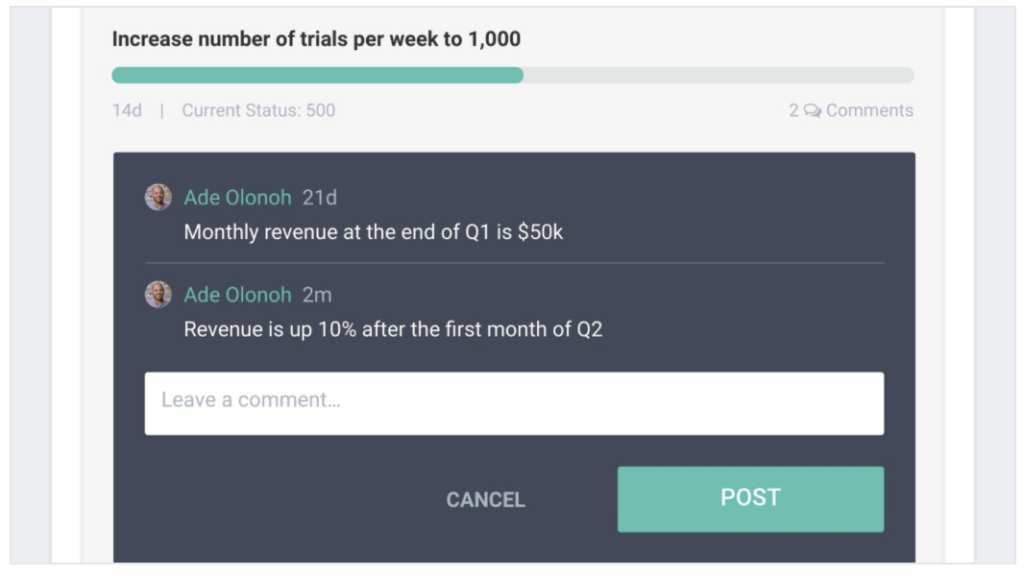
- Navigate to the OKRs tab and click the teal button.
- Enter your goal, subgoals or milestones and assign a specific timeframe.
- Publish your goals to your team and the broader organization.
Price: From $4 per person/month. Free 14-day trial available. Now that you have the background, know-how and tools to get started with OKR goal-setting, go ahead and give it a try with your team.
